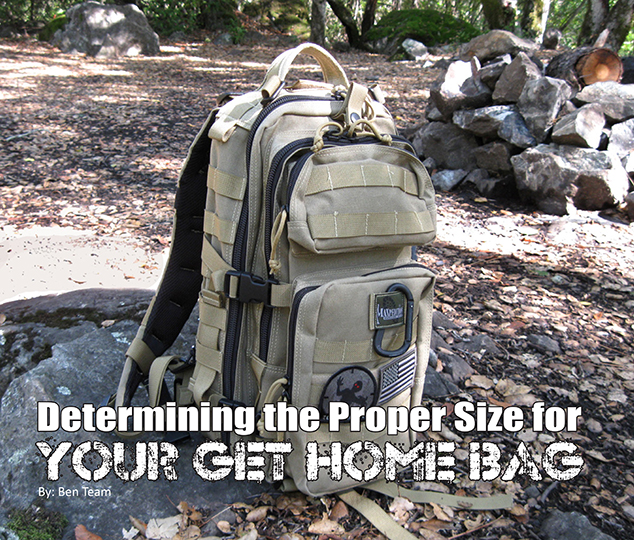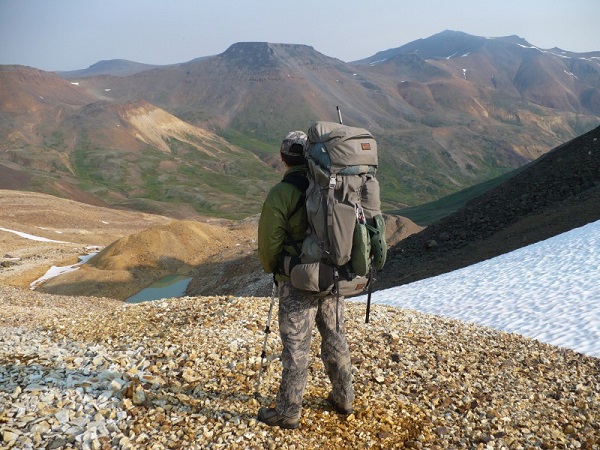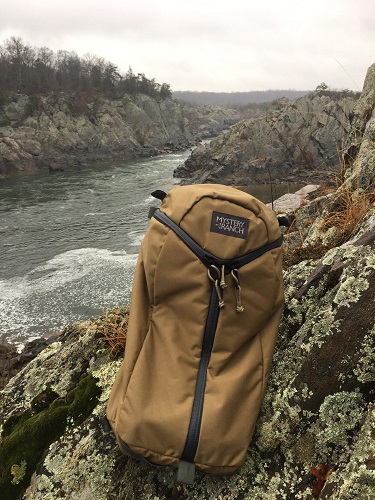
Most survivalists have a bug out bag packed and ready to help them get out of Dodge if the world starts to fall apart. But some would argue it’s more important to have a bag designed for exactly the opposite purpose of getting home. A bag full of gear and supplies to help get back home if you’re out and about when an emergency occurs.
There are few rules or guidelines to help you determine the best size for your get home bag. Every individual will have varying needs and backpacks provide different types of space. Some feature a number of small pockets, others a large central pouch, while some will accept a number of add-on pockets to increase the capacity.
Determine the best size for your situation by considering the following factors:
1. How far are you likely to be from home?

This is easily the most important factor in your decision-making process. As when preparing for any journey, the distance you’ll travel along with the length of time will determine most of your equipment and supply needs. These needs will obviously influence the amount of storage space you require.
Typically, you’ll be able to walk about 2 to 3 miles per hour while trying to get home. Rough terrain, heavy loads, and other challenges will reduce this pace. This pace is helpful for planning purposes.
If your travels rarely take you more than 5 or 6 miles from home, you’ll only be walking for an hour or two. This means you won’t need a lot of food or water nor the tools and supplies to build a shelter. You’ll likely be able to get by with a change of clothes, some basic survival tools like a flashlight, knife, Firestarter, etc., a few liters of water, and a meal or two. You can fit this type of load in a relatively small backpack.
→ In these types of situations, you’ll only need a bag that provides between 10 and 20 liters of space.
By contrast, those who work or go to school 10 to 20 miles or more from home will be faced with a day long journey. This means you may need a few additional supplies as well as more food and water. A supplemental communication device is probably wise to include in your pack. A self-defense weapon becomes more appropriate too. Accordingly, you’ll want to scale up your bag size a bit for such journeys.
→ If faced with a day long journey, you’ll probably need a bag that provides 20 to 40 liters of space.
Those who commute a distance more than 20 miles will typically be facing a multi-day trip back home. This means you’ll need to bring the tools and supplies to make a crude shelter. You’ll also need significantly more water than those who are travelling short distances. Pick a pretty large backpack that can provide the support you’ll need to carry a heavy pack for an extended period of time.
→ Multi-day trips will typically require you to select a bag that provides 30 to 80 liters of space.
2. What type of climate and weather will you confront on the journey?

Cold or rainy weather will force you to bring more equipment on your journey. Extra clothing will be needed as well as a blanket or sleeping bag to avoid hypothermia. You’ll definitely need a shelter in bad weather if your trip is likely to last more than a single day.
Keeping dry is certainly important while hiking back home. Even mild temperatures can cause medical problems if you become soaking wet. A poncho won’t take up much space in your pack. If you need to bring along waterproof footwear or rain gear, purchase a pack that offers plenty of space.
3. What type of terrain will you encounter while heading home?
Consider the type of environment you’ll be crossing when trying to decide on the proper get home bag size.
For example, keep your pack size as small as possible while still selecting one large enough to contain all of the necessary gear and supplies if you go through dense forests. You don’t want your bag snagging branches and vines the whole way home. You want to nimbly negotiate these areas to travel as quickly as possible.
Alternatively, pack size won’t represent a big problem for those traveling through fields, agricultural lands, or deserts. In fact, a larger pack will provide greater protection from the sun and other environmental factors in such situations. You may actually want to select a slightly larger pack than would normally be necessary.

Most individuals will likely be traveling through urban or suburban areas when trying to get home. In such cases, you’ll almost always want the smallest bag possible to facilitate freedom of movement and agility. You may jump on a bus, board a train, or commandeer a bicycle to make your way home quicker. In each case, you’ll appreciate the smallest bag possible. You may also find it necessary to weave through dense crowds, which will also be easier with a relatively small pack.
Final Thoughts
As you can see, selecting the proper get home bag size will depend almost entirely on your specific circumstances. Just be sure to think through the three factors listed above when making your choice and it will be easy to pick the best pack size.
